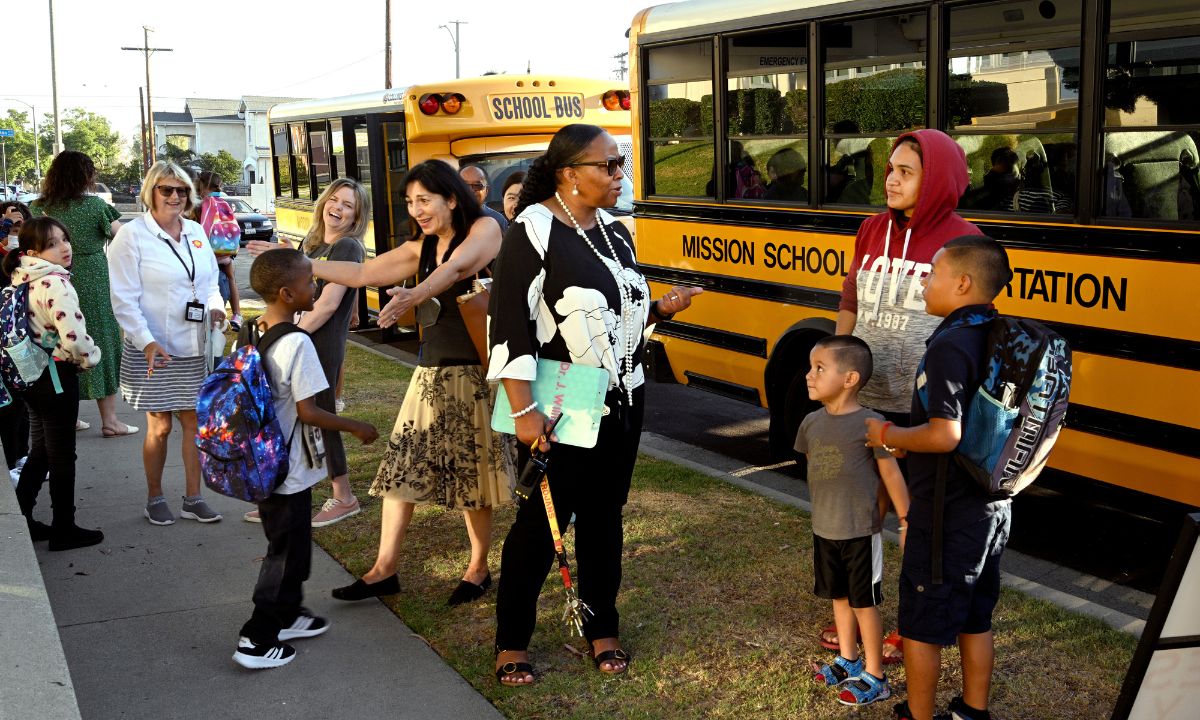What Dismantling the Education Dept. Means for Family and Community Engagement
Borrello: The executive order that calls for shuttering the federal agency claims to “empower parents, states and communities,” but will it?

Get stories like this delivered straight to your inbox. Sign up for The 74 Newsletter
Recently, the Trump administration released an executive order titled: “Improving Education Outcomes by Empowering Parents, States, and Communities.” As executive director of the national association dedicated to engaging families, schools and communities, I naturally took great interest.
The focus of the executive order, though, was more troubling than its title: It directed the secretary of education to facilitate the closure of the U.S. Department of Education. Many have written, including here at The 74, about concerns with the order’s implications for our education system, especially for the most vulnerable students. I share many of those concerns.
Eliminating expertise and capacity within the department will not magically enable states to do a better job to improve education, as those in states often count on federal support and guidance to enhance quality.
The order’s explicit acknowledgement of parents and communities compelled me to write this commentary. Our work at the National Association for Family, School and Community Engagement advances policies, practices, and research to promote family-school partnerships that support student achievement. Family and community engagement is one of the strongest predictors of student success.
Moreover, improving the degree to which education institutions partner with families and communities creates conditions that improve other factors like teacher recruitment and retention, family and community well-being, and overall school improvement.
Despite its importance, high-quality family and community engagement is usually an afterthought in many policy conversations. In general, there are not enough resources to carry out this work. More is needed to bolster everything from teacher preparation for family engagement to training and services directly to families.
Many of the most important programs that foster authentic family and community engagement come directly from the federal government. For example, Title 1 provides funding to low-income schools in both rural and urban communities and includes funds specifically dedicated to family engagement. Full-Service Community Schools grants support active family and community engagement as one of the four requirements.
Federal grants fund Statewide Family Engagement Centers in 19 states and Parent Training and Information Centers in all states, programs that have been crucial in elevating statewide work that better links schools to families and their communities. These programs are prime examples of initiatives that should not only be sustained but expanded. Although I am relieved they have not yet been defunded, initiatives such as these now face a huge amount of uncertainty.
There is a nonpartisan and common desire to better connect schools, families, and communities in authentic ways based on shared power, trust, and accountability. It is also widely agreed that schools, and the education system more broadly, can do a lot more to support these relationships.
However, in some cases, exclusionary practices are draped in the cloak of family engagement or parents’ rights, which pit families against each other and against schools or otherwise inappropriately frame family engagement as a “watchdog” exercise resulting in censorship and fear of retribution. These narratives misrepresent family engagement. Instead, prioritizing deeply-rooted connections among the various stakeholders would go a long way to building a system where all students are better served.
All this being said, I am not naive. As aptly identified by many others, threats to a department focused on ensuring quality education for all students leave me apprehensive.
The order’s proponents argue that these programs can be easily administered outside the Department of Education. However, it is doubtful that shifting administrative responsibility for education programs to other downsized departments will be smooth and more efficient.
Worse still, there’s not yet a clearly articulated plan to develop the necessary knowledge or infrastructure to ensure these programs could continue to succeed outside of the Education Department, especially considering that resources, capacity and staff expertise have recently been substantially reduced. The lack of concrete details and the growing uncertainty around these changes leaves more questions than answers.It is my hope that the order’s title is not made up of hollow words and instead reflects an increased focus on family and community engagement in education, especially as it translates into funding, policies, and programs that support this work. While I acknowledge much of the responsibility for education lies with state and local governments, we have a collective responsibility as a country to guarantee that all students—from urban Miami to rural Montana—have access to a high-quality public education. That is what the Department of Education was founded on, and what we must ensure remains a priority moving forward.
Get stories like these delivered straight to your inbox. Sign up for The 74 Newsletter

;)
